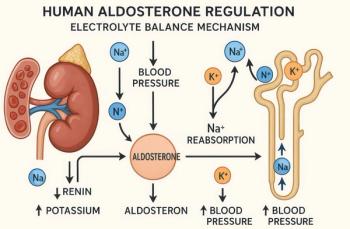
Rectal Prolapse in an Elderly Woman
An 83-year-old woman with a history of mild dementia and hypertension presented with rectal bleeding. Her husband stated that she had "hemorrhoids." Her current medications included donepezil, ramipril, and docusate sodium. Earlier in the year, a colonoscopy had revealed diverticulosis.
An 83-year-old woman with a history of mild dementia and hypertension presented with rectal bleeding. Her husband stated that she had "hemorrhoids." Her current medications included donepezil, ramipril, and docusate sodium. Earlier in the year, a colonoscopy had revealed diverticulosis.
A protrusion through the anus of some of the layers of the rectum was noted on examination. The patient did not have to strain to reveal the rectal mucosa. Jack-Ky Wang, MD, and Laurie Meng, PA-C, of Palos Heights, Ill, diagnosed stage II rectal prolapse.
In the United States, the incidence of rectal prolapse is 4.2 per 1000 population and 10 per 1000 population in adults older than 65 years. The peak incidence is in the fourth or seventh decade of life and in the first 3 years of life. It is more common in women. In 10% to 25% of patients, uterine or bladder prolapse is also present. In 35% of patients, there may be an associated cystocele.1
The signs and symptoms include constipation (15% to 65% of patients), fecal incontinence (28% to 88%), mucus drainage, protruding anal mass, and rectal bleeding.2 Rectal prolapse is a clinical diagnosis. Typically, the patient is asked to sit on a toilet and strain, after which the rectum should prolapse. The exposed rectal mucosa initially reduces spontaneously after defecation. The concentric rings of mucosa are classic signs of rectal prolapse.
Further diagnostic testing, with rigid proctosigmoidoscopy, may be performed to assess the rectum for additional solitary rectal ulcers. These lesions are present in about 10% to 25% of patients with either internal or full-thickness prolapse.1
Treatment may consist of:
- Reduction of the prolapse with gentle digital pressure.
- Topical application of granulated sucrose to the mucosal surface, which may reduce bowel edema and allow reduction.3
- Medication for constipation and diarrhea.
- Consultation with a general or colorectal surgeon.
This patient's rectal prolapse was gently reduced, and she was referred to a colorectal surgeon. However, because she was relatively asymptomatic, she was treated conservatively with a dietary fiber supplement. If her symptoms worsen, surgical intervention is an option.
References:
REFERENCES:
1.
Poritz LS. Rectal prolapse. Available at: http://www.emedicine.com/med/ topic3533.htm. Accessed March 18, 2005.
2.
Flowers LK. Rectal prolapse. Available at: http://www.emedicine.com/ emerg/topic496.htm. Accessed March 18, 2005.
3.
Myers JO, Rothenberger DA. Sugar in the reduction of incarcerated prolapsed bowel. Report of two cases.
Dis Colon Rectum.
1991;34:416-418.
Newsletter
Enhance your clinical practice with the Patient Care newsletter, offering the latest evidence-based guidelines, diagnostic insights, and treatment strategies for primary care physicians.




